Safety in Health Care Ties Closely to Workforce Well-Being – Updates from Press Ganey and ECRI
“First, do no harm” is a key M.O. in health care. The phrase “patient safety” summons up a list of common sources such as medication errors, surgical errors, health care-associated infections, diagnostic errors, among other adverse events and harms people experience in the course of receiving health care.
While safety outcomes and health care organizations’ “safety cultures” are improving, there is evidence in the U.S. that people — both patients and the health care workforce — feel less safe, discussed in Safety in Healthcare 2024 from Press Ganey. “Safety is the foundation of healthcare. It anchors all experiences — for patients and the workforce,” the report summarizes. 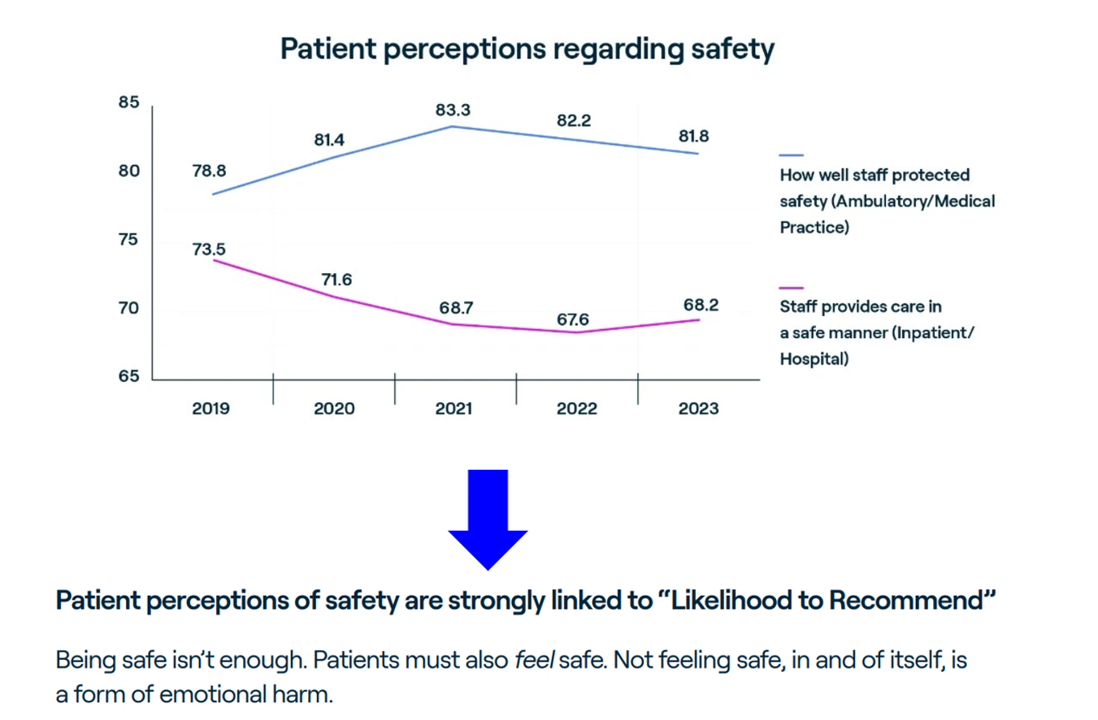
The patient experience of safety is illustrated in the first chart, showing sharp differences in how health consumers perceive safety in ambulatory care settings compared with inpatient hospital environments.
This gap in patient perceptions of safety in inpatient versus outpatient settings is 2.5 times wider than it was before the COVID-19 pandemic (2019 on the X-axis). In 2019, the gap in safety perceptions among patients was about 5 percentage points; in 2023, that gap was 13.6 points, 81.8% of patients saying staff protected me well in ambulatory care compared with 68.2% of patients saying they found staff delivered care in a safe manner in hospital settings.
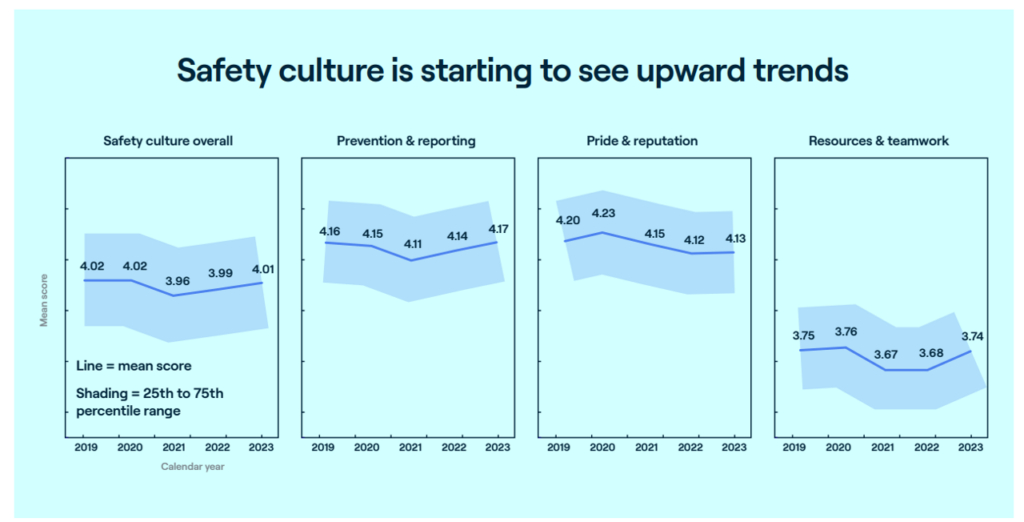
There is good news to report coming out of the Press Ganey study in that safety culture is even to upward trending, the line charts indicate: safety culture overall is improving over the past two years, especially for prevention and reporting and for resources and teamwork among the workforce. 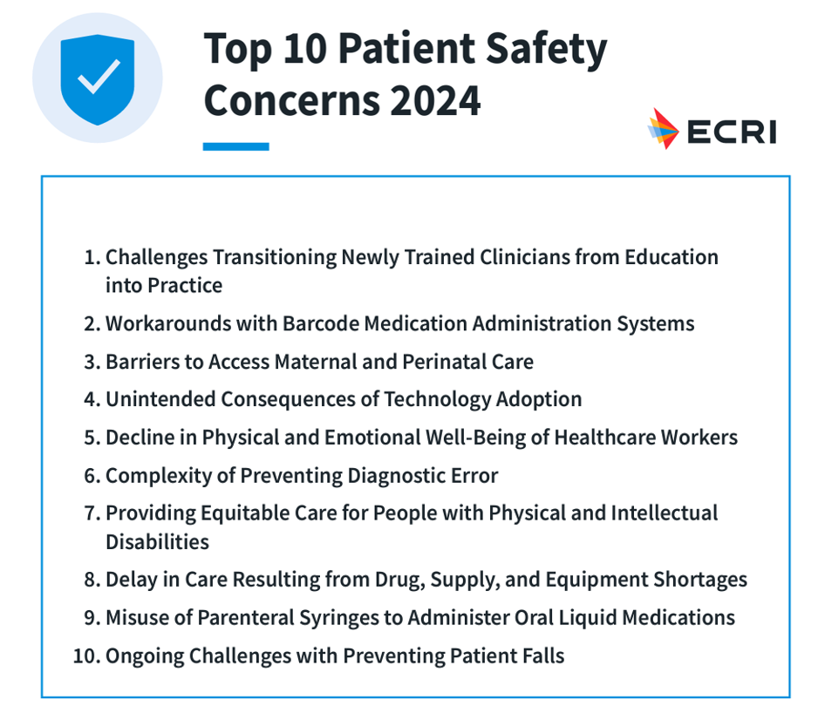
Health Populi’s Hot Points: We have further insights to weave into the state of patient safety in the U.S. from ECRI’s latest Top 10 Patient Safety Concerns 2024 report.
Here’s ECRI’s list of the Top 10, a mix of supply- and clinical process-related incidents, IT-related impacts, and workforce + human capital concerns. #1 relates to how newly-trained clinicians transition into real-world practice.
Add to that #5, which ties to the Press Ganey findings on the health care workforce safety culture where Press Ganey quantified assaults against nursing personnel, just one data point of several exacerbating the decline of emotional well-being among health care workers.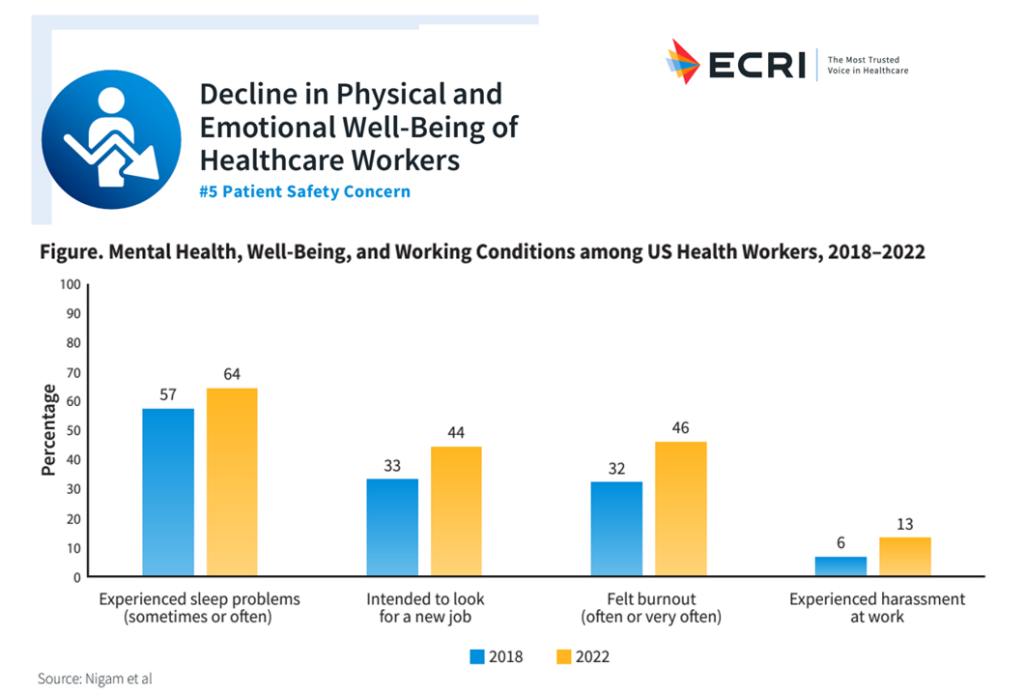
ECRI’s Top 10 report included this exhibit quantifying aspects of the decline of physical and emotional well-being of healthcare workers — worsening sleep problems, feelings of burnout, experiencing harassment at work (doubling from 6% to 13% of health care workers), and the intention of looking for a new job increasing by 1/3, from 33% in 2018 to 44% in 2022.
The data in this chart comes from a study published by Nigam and colleagues in the CDC’s Morbidity and Mortality Weekly Report dated November 3, 2023. In Health Worker-Perceived Working Conditions and Symptoms of Poor Mental Health, the researchers assessed the health worker mental health crisis in 2022, noting that positive working conditions were associated with less burnout and better mental health.
ECRI’s recommendations addressing the physical and emotional well-being of health care workers include eliminating stigma around behavioral health needs, setting a tone of personal connectedness, leveraging patient and family engagement committees to identify pain points (bringing the community and patients together with staff and the organization), and to implement a peer support program providing a team trained in psychological first aid to respond to stressful or traumatic workplace events.
Press Ganey also calls out the fact that top-performing organizations are taking an integrated approach to the Human Experience that accounts for both employee and patient perceptions. This requires continuous listening to patients and workforce alike as a priority to “underscore safety as healthcare’s North Star” in the words of Press Ganey’s recommendations.
A data-point postscript added 3rd April at 2 pm EDT:
A new study on happiness-at-work landed in my inbox just now, so I’ve got another perspective on health care workers’ moods as of 2023.
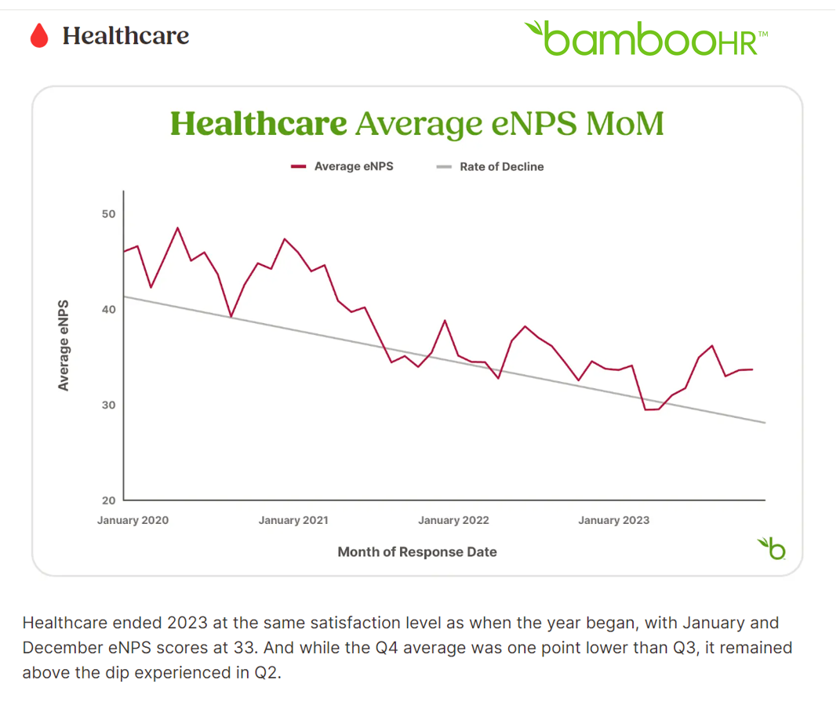
This chart focuses on BambooHR’s benchmark employee Net Promoter Score for satisfaction measured in the last quarter of 2023. We see the health care eNPS tick up a bit in latter 2023, but still below the collective mood for the industry’s workers compared to the start of the pandemic year of 2020.
Most other industries enjoyed upturns in their employee happiness scores, except for tech and nonprofits, BambooHR found.
See the study results here in Why Is Everyone So Unhappy at Work? BambooHR Employee Satisfaction Shows 2023 Holiday Blues.




